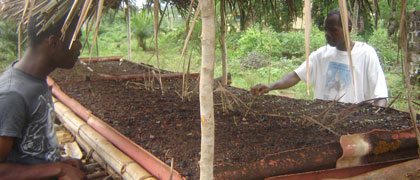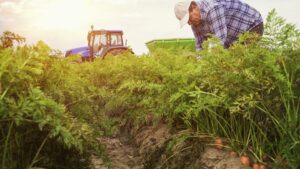It’s A High Wire Act
“What is it, exactly?” This is the question colleagues keep asking me about seed systems development. The topic was first raised by a seasoned station manager from Puerto Rico and next by a long-time U.S. production location manager. To gain a better understanding, let’s look at the challenges encountered during seed systems development. The view from this vantage point is unsettling, to say the least.
First, seeds systems development occurs where there is a total lack of or at best a non-functioning national system to conduct basic and applied agricultural research, or provide practical education to farmers and industry representatives. In these locations, citizens too often experience imperiled personal liberties and basic security. Additionally, there’s limited agricultural technology and input supplier options. Safeguards to protect citizens from harmful business practices are void.
The real burden is that there’s no system of assurance that fosters commercial activity. The components of a national economy, such as the monetary system or public policy structure, appear shaky at best. Commercial sectors that can help drive the economy, such as agriculture, banking and transportation, are likely quite fragile or even nonexistent. Public sector services, such as health care, electricity, navigable waterways and interior roadways, are barely operational. The time and effort expended to acquire food for the family are a daily challenge.
Technology is hard to come by. Imagine not having a single practical source from which to obtain commercial fertilizer, presuming one had the money. If computers are available, they are likely old. Internet access and reliability are problematic. Add to it that adult literacy levels are often low; therefore, many are not inclined to seek information nor are they prepared to use it.
In most cases, seed systems development is more about improving an existing system than creating a new one. Seed systems can range from extremely informal to highly structured. But keep in mind that the development of a seed system is not a lineal process.
A key question is how readily can germplasm be obtained and varieties developed that will be appropriate for a given geography, production system or social structure under present day economic realities? How much time might lapse before achieving any success? What level of investment might be required? Once launched, how likely is it that ongoing support will be adequate to assure farmers a pipeline of new varieties?
Presuming appropriate varieties can be developed, the next challenge becomes organizing the multiplication and dissemination of newer varieties in a manner that satisfies farmer demand at local prices, while maintaining the integrity of the seed. How long will it take for farmer demand at local prices to support the creation of a reliable operation for seed multiplication?
Demand for improved varieties is determined by farmer awareness of new offerings and the perceived benefit. Should farmers trust the test results used to promote the seed? Do farmers possess a belief system that causes them to question if the seed is appropriate to use? What’s been their previous experience with improved seed? Can farmers be assured an adequate supply of seed will be available at an acceptable price?
Logistical issues can interfere with getting improved seed to farmers and becomes a critical factor when farmers make seed choices. Will improved seed be available in a timely fashion? Deliveries to some subsistence villages might be infrequent and unreliable. Roads don’t reach or even get near some villages. Seed must be available when the rains come in certain localities or one must wait for the next rain cycle. Not having seed on hand when the planting season arrives will likely lead to a disruption in the family food supply.
Improving a seed system in a lesser-developed country is a long-term project. Typically, multidisciplinary teams comprised of talented and dedicated educational and technical collaborators become fully engaged with key in-country personnel. Much support, both in the form of financial resources and governmental backing, is also required on a long-term basis.
Just doing the right things and doing things right is not enough. Timing of implementation must be on target to bring about the proper magnitude of change — not too slow, not too much, not too fast and not too few. The finesse required to refine a seed system is somewhat comparable to that needed of a circus performer teetering across a deep chasm while on the high wire. In the language of seed systems practitioners, this delicate balancing act is known as “scaling.”














